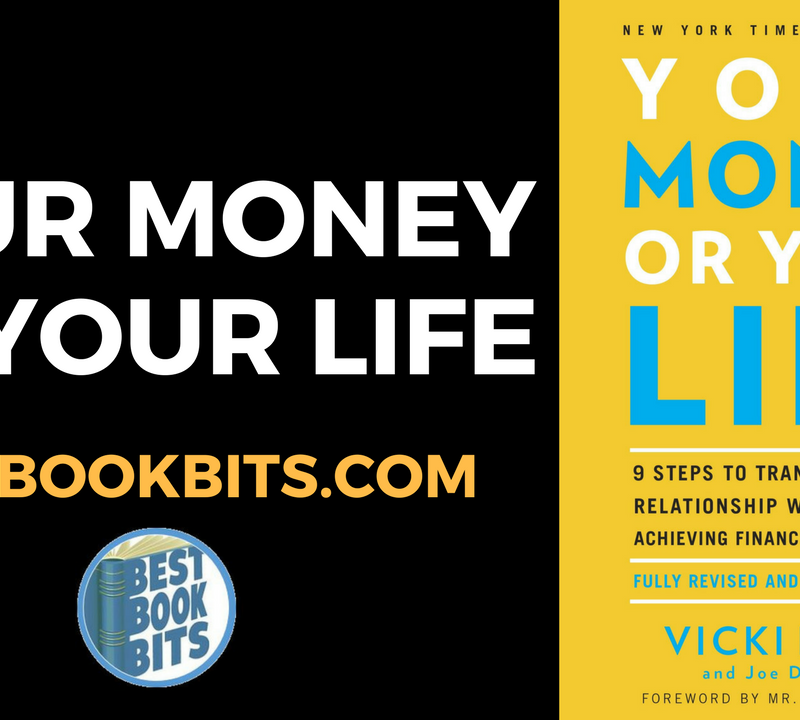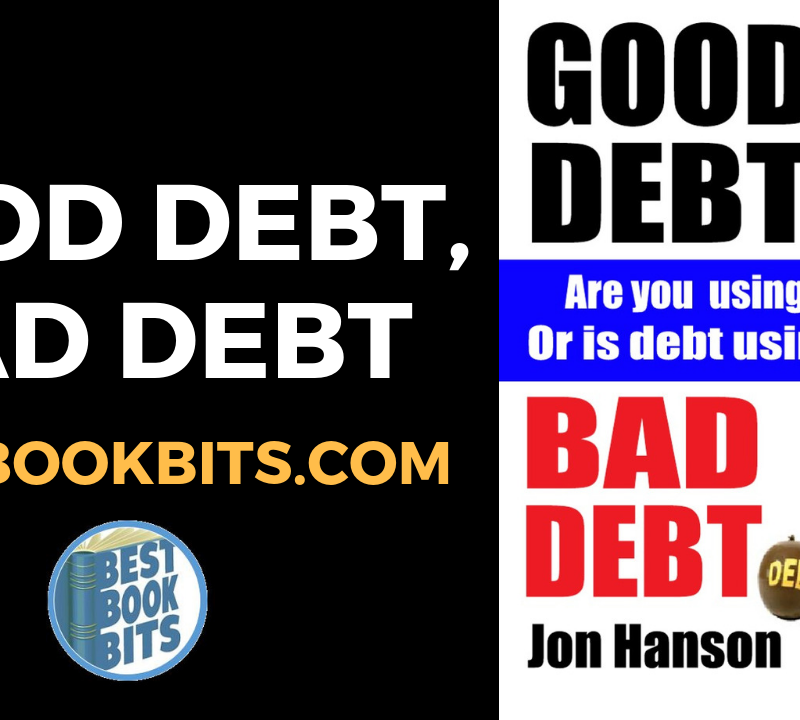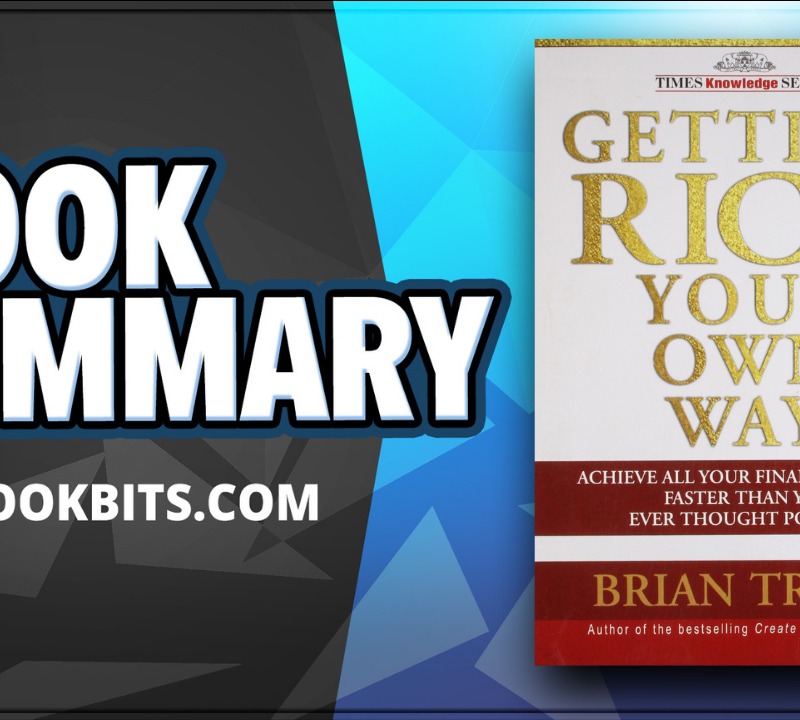★DOWNLOAD THIS FREE PDF SUMMARY HERE
? MY FREE BOOK TO LIVING YOUR DREAM LIFE”
? SPONSOR BESTBOOKBITS BY USING PATREON
? SUPPORT BESTBOOKBITS BY CLICKING THE LINKS BELOW
- 150 PDF Summaries
- Coaching Program
- Subscribe to My Channel
- Website
- Spotify
- Book Club
- Mailing List
Preparatory advice
Before beginning the program, Ramsey asserts the need to “re-educate” in the arena of personal finance. He stresses the fact that improving one’s financial situation is 80% psychological and about forming new habits and thinking patterns. He gives the following rules for those wishing to make a change:
- Do not buy a new car, or lease a car (this is hard for some, but crucial)
- Don’t use debt consolidation, it doesn’t get at the root of the problem
- Preplanning the details of your funeral is wise, but prepaying is unwise. You could invest the money for a much better return.
- Avoid declaring bankruptcy if at all possible. Debt-management companies tend to advise this ‘solution’ prematurely.
- If you are going to leave a marriage, make sure that all debts are refinanced out of your name or force the sale of the item […] So sell the house or refinance it as part of the divorce, period.
Divorce decrees do not have the power to take your name off credit cards and mortgages, so if your spouse doesn’t pay, be ready to. You still owe the debt. […] A lender who doesn’t get paid can correctly sue the parties to the loan, including you.
Use the envelope system for budgeting.
- You need insurance for the following items (depending on your situation and the health benefits you receive in your country): Auto and homeowner insurance, life insurance, long-term disability, health insurance (The number one cause of bankruptcy today is medical bills), long-term care insurance
- You are going to die, so make a will. It ensures your money goes where you would want it to go.
- Every year, take a little time to educate yourself on personal finance.
Wealth doesn’t just happen […] You don’t need to apply to Harvard to get an MBA with a specialization in finance. You do need to read something about money at least once a year.
- Get rid of your credit cards. There is a myth that debit cards are less secure in the event of theft or fraud. This is not true. There is also a myth that in order to “build your credit”, you need credit cards. Instead, Ramsey argues
Either you save up for a 100 percent-down plan, or if this is not feasible: find a mortgage company that does actual underwriting. Some mortgage companies call this a “No Credit Score” or “Non Traditional Credit” process.
That means they are professional enough to process the details of your life instead of using only a FICO score (lending for dummies). It’s getting harder to find a lender who will go to the trouble of actually getting to know you, but they’re out there.
Specific Notes on the Approach
The foundation of the approach is focus. If you try and do everything at once, progress will be slow. This will make you feel you aren’t accomplishing anything, which may lead you to give up. Hence follow the steps in order, and don’t try and do more than advised for the step you are on.
STEP 1: Begin the emergency fund
This step is necessary to stop you getting derailed in subsequent steps when unexpected expenses occur. If your household income is greater than $20,000, aim for a $1,000 emergency fund. If your household income is less than $20,000, aim for a $500 emergency fund.
Start with a little fund to catch the little things before beginning to dump the debt. It is like drinking a light protein shake to fortify your body so you can work out, which enables you to lose weight […] Twist and wring out the budget, work extra hours, sell something, or have a garage sale, but quickly get your $1000.
STEP 2: Start the debt snowball
This step is Mathematically illogical, but we’re dealing with human psychology here, so that’s not the point. List all your debts (apart from your home loan) in order from smallest to largest. Then with intense focus (what Ramsey refers to as “gazelle focus”) pay off the debts focusing on the smallest first. Do not attempt to pay off more than one debt at a time.
The only time to pay off a larger debt sooner than a smaller one is some kind of big-time emergency such as owing the IRS and having them come after you, or in situations where there will be a foreclosure if you don’t pay it off. The reason to list smallest to largest is to have some quick wins.
In the event that you are unable to begin tackling your debt (your budget is ‘stopped-up’) then you will need to do something radical: selling possessions, working overtime, taking a second job.
You will arrive at the beginning of Step Three in around eighteen to twenty months. When you reach this step, you have $1000 cash and no debt except your home mortgage.
Step Three: Finish the Emergency Fund
A full emergency fund covers three to six months of expenses. To determine whether or not you should err towards three or six months, consider your situation. If you are in a riskier position (e.g. self-employed, earning straight commission), then err on the side of caution. The emergency fund is applicable to everyone, even those with a guaranteed income – you cannot predict out-of-budget emergencies.
The emergency fund is not for investing. It must be liquid (i.e. you can easily and rapidly access it).
The only exception to the order of the steps thusfar is if you have an impending major expense – such as a layoff or birth of a child. In this case, you would be wise to focus on step 3 before step 2. Saving for a downpayment or cash purchase of a home should occur only after steps 2 and 3 are complete.
I love real estate, but do not buy a home until you finish this step. A home is a blessing, but if you move into home ownership with debt and no emergency fund, Murphy will set up residence in the spare bedroom.
Step 3(b): Save for a down payment on a property
This is optional: “You should save for the home if you have the itch before moving on to the next step.”
You are now debt-free except for the home mortgage, and you have three to six months of expenses saved. Getting to the end of this step if you are gazelle-intense takes the typical family twenty-four to thirty months.
Baby Step 4: Invest 15 Percent of Your Income in Retirement
Before this step, you have ceased or have never started investing, and now you have to really pour on the coals. Invest 15 percent of before-tax income annually towards retirement. 15% is optimal because it allows you to complete the next two steps effectively. Furthermore, starting to invest for retirement at this stage in the plan allows you to reap the rewards of compound interest.
When calculating your 15 percent, don’t include company matches in your plan. Invest 15 percent of your gross income. If your company matches some or part of your contribution, you can consider it gravy.
“The Roth IRA will allow you to invest up to $5000 per year, per person. There are some limitations as to income and situation, but most people can invest in a Roth IRA. The Roth grows tax-Free. If you invest $3000 per year from age thirty-five to age sixty-five, and your mutual funds average 12 percent, you will have $873000 tax-free at age sixty-five.”
Baby Step 5: Save for College
Ramsey stresses that the pedigree of the university should not be your key concern. If you can afford the extra money, then go for it. If it would require you to go into debt, then do not pursue that path:
In some areas of study and in a very few careers, where you graduate from will matter, but in most it won’t […] How can you justify going into debt $75,000 for a degree when you could have gone to a state school and paid for it out of your pocket debt-free? You can’t. If you have the $75,000 extra cash or a free-ride scholarship and want to go to that private school debt-free, by all means, do it. Otherwise, reconsider.
Aggressively apply for scholarships. The lists of these [small to medium] scholarships can be bought online, and there are even a few software programs you can purchase to help with your applications. If you are not sending hundreds of applications, you are probably doing something wrong.
Baby Step 6: Pay Off Your Home Mortgage
“Every dollar in your budget that you can find above living, retirement, and college should be used to make extra payments on your home.”
Myth: It is wise to keep my home mortgage to get the tax deduction
Reality: The tax deductions are no bargain
Myth: It is wise to borrow all I can on my home because of the great interst rates; then I can invest the money.
Reality: You really don’t make anything when the smoke clears
Why? Because the returns do not account for tax and risk in the housing market. Sophisticated investors always factor in risk.
DO NOT take out a 30 year mortgage and ‘promise yourself’ you will pay it back in 15 years. You won’t. No one ever does. This will end up costing you hundreds of thousands of dollars. A good rule is that the payment on the mortgage should never be more than 25% of your take-home pay, and no longer than a 15 year term.
Myth: It is wise to use the lower rates offered by an ARM (Adjustable Rate Mortgage) mortgage or balloon mortgage if you know you’ll “be moving in a few years anyway”
Reality: You will be moving when they foreclose
By reaching the last step of your Total Money Makeover, you have entered the top 2 percent of Americans. You are totally debt-free – no house payment, no car payment. You are not Mastered by a Card […] you have no student loans, and you are free.
Step 7: Build Wealth
Here is where you can continue to invest and build wealth until you have reached financial security:
When your money makes more than you do, you are officially wealthy. When you can comfortably live on your investment income, you are financially secure […] You have reached the Pinnacle Point when you can live off 8 percent of your nest egg.
Summary of the seven steps
★DOWNLOAD THIS FREE PDF SUMMARY HERE
? MY FREE BOOK TO LIVING YOUR DREAM LIFE”
? SPONSOR BESTBOOKBITS BY USING PATREON
? SUPPORT BESTBOOKBITS BY CLICKING THE LINKS BELOW
- 150 PDF Summaries
- Coaching Program
- Subscribe to My Channel
- Website
- Spotify
- Book Club
- Mailing List
2 comments on Dave Ramsey: The Total Money Makeover Book Summary
Leave a Reply
You must be logged in to post a comment.














It works quite well for me
I like the article